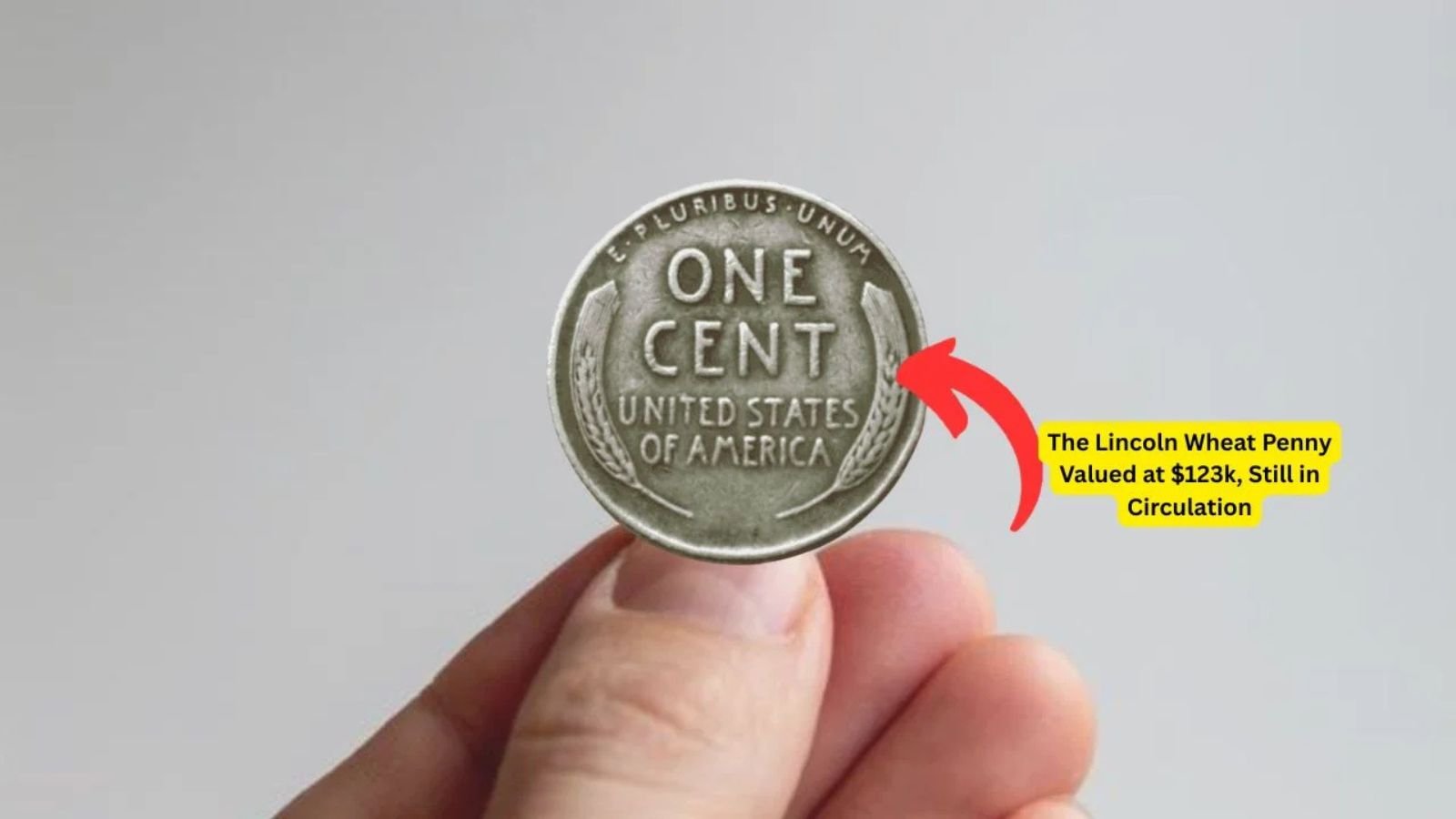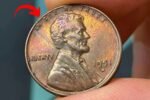In a world where digital payments dominate and people rarely pay much attention to physical coins, a remarkable truth hides in plain sight—an unassuming Lincoln Wheat Penny could be worth as much as $123,000. While most of us casually drop pennies into tip jars, vending machines, or change trays, one of these tiny copper coins could be a literal treasure trove just waiting to be discovered.
This astonishing fact has sparked renewed excitement among coin collectors, historians, and even casual savers. Whether tucked away in dusty old jars, stashed in a forgotten drawer, or passed over in pocket change, the Lincoln Wheat Penny offers more than just face value—it offers the possibility of unexpected fortune.
The Legacy of the Lincoln Wheat Penny
The Lincoln Wheat Penny has an illustrious history that dates back to 1909. This was a centennial tribute to President Abraham Lincoln’s birth, and it became the first U.S. coin to feature an actual person rather than a symbolic image. Renowned sculptor Victor David Brenner was commissioned to design this landmark piece, and his initials (VDB) can still be found on some early issues—most notably the valuable 1909-S VDB penny.
What set the Lincoln Wheat Penny apart was its distinctive reverse design: two elegant stalks of wheat flanking the denomination and the phrase “ONE CENT.” These elements gave it its popular nickname—the “Wheat Penny.”
The design remained unchanged until 1958, when the reverse was replaced by the Lincoln Memorial in 1959. In the nearly five decades of its production, the Lincoln Wheat Penny circulated through the hands of millions of Americans, from the Great Depression to World War II and beyond. While most of these pennies remain common, a select few have turned out to be incredibly rare—and incredibly valuable.
Why Certain Lincoln Wheat Pennies Are Worth Thousands
Not all Lincoln Wheat Pennies are created equal. The difference between a 1-cent coin and one worth six figures comes down to several critical factors. These include rarity, mint mark, condition, minting errors, and historical significance.
| Factor | Description | Impact on Value |
|---|---|---|
| Rarity | Limited number minted or surviving | Scarcer coins are often more sought-after by collectors |
| Mint Mark | Indicates mint origin (D for Denver, S for San Francisco) | Certain locations had smaller mintages and higher values |
| Condition | Graded from Poor (P-1) to Mint State (MS-70) | Pristine coins fetch significantly higher prices |
| Minting Errors | Production mistakes like double dies or off-centers | Errors add uniqueness and desirability |
| Historical Significance | Context of minting, such as wartime issues | Adds narrative and collector interest |
The Crown Jewel: The 1943 Bronze Lincoln Wheat Penny
Among the rarest and most coveted of all Lincoln Wheat Pennies is the legendary 1943 Bronze Lincoln Wheat Penny. During World War II, copper was a critical war material, and in an effort to conserve it, the U.S. Mint began producing pennies from zinc-coated steel. These steel cents are themselves unique but relatively common.
However, a few bronze planchets—copper blanks left over from 1942—accidentally made their way into the coining presses. The result was a minuscule number of 1943 Lincoln Wheat Pennies made from bronze instead of steel.
Only about 20 genuine examples are known to exist, and when one surfaces at auction, it generates intense interest. Depending on its condition and provenance, a 1943 Bronze Lincoln Wheat Penny can sell for $100,000 to well over $1 million. For collectors and treasure hunters, this coin represents the pinnacle of Lincoln Wheat Penny collecting.
More Exceptionally Valuable Lincoln Wheat Pennies
While the 1943 Bronze penny is in a league of its own, other Lincoln Wheat Pennies are also worth eye-popping sums. Here are a few examples that make collectors’ hearts race:
| Year/Variety | Estimated Value (Depending on Condition) | Reason for Value |
|---|---|---|
| 1909-S VDB | $750 – $2,500+ | Short mintage and designer’s initials on reverse |
| 1914-D | $300 – $5,000+ | Only 1.2 million minted in Denver |
| 1922 Plain (No D) | $500 – $25,000+ | Minting error where mint mark is missing |
| 1931-S | $100 – $1,500+ | Just 866,000 minted, making it a low-mintage rarity |
| 1955 Doubled Die | $1,000 – $15,000+ | Highly noticeable doubling on obverse text and date |
These coins, although rare, still occasionally surface in unexpected places.
The Hunt Is On: Searching for Lincoln Wheat Pennies in the Wild
One of the most exciting aspects of the Lincoln Wheat Penny is that many rare versions may still be out there—hiding in plain sight. While a 1943 Bronze penny turning up in your change is unlikely, other valuable Wheat Pennies do occasionally appear in everyday settings.
Reports of people finding rare Wheat Pennies include discoveries in:
-
Rolls of coins purchased from banks
-
Old coffee tins or jars filled with coins
-
Estate sales or garage sales
-
Inherited coin collections
-
Tills and cash drawers of old family businesses
The key is knowing what to look for. Valuable Lincoln Wheat Pennies can resemble ordinary coins, so being observant and informed is crucial.
How to Identify a Valuable Lincoln Wheat Penny
If you want to join the ranks of people on the hunt for valuable coins, here’s a checklist to guide your search:
-
Examine the Date Closely: Key dates include 1909-S, 1914-D, 1922 (no D), 1931-S, and 1943.
-
Look for Mint Marks: These tiny letters under the date show the mint location. Coins with an “S” or “D” are often more valuable.
-
Search for Errors: Doubled die obverses, off-center strikes, and coins made of the wrong metal (like a bronze 1943 cent) can be extremely valuable.
-
Check the Coin’s Condition: Even common dates can command good prices if they are in mint condition.
-
Authenticate Suspected Rarities: Fake coins exist, especially for the rarest dates. Use a reputable coin dealer or grading service to confirm authenticity.
The Revival of Coin Collecting
Fueled by stories of life-changing finds, coin collecting is making a strong comeback. Once seen as a quiet hobby for retirees or history buffs, it’s now enjoying a surge in popularity among younger generations—especially through social media platforms.
Viral videos of people discovering rare Lincoln Wheat Pennies have inspired thousands to take a second look at their change jars. Online communities, YouTube channels, and coin collecting forums are buzzing with advice, coin grading tutorials, and success stories. This digital camaraderie is helping new collectors get involved and experienced hobbyists stay engaged.
The Historical Power of the Lincoln Wheat Penny
Beyond the financial potential, each Lincoln Wheat Penny is a tangible piece of American history. These pennies circulated during monumental events—the Great Depression, World War I and II, and the post-war boom. The coins offer a glimpse into the past and help connect generations through shared heritage.
The 1943 steel pennies, for instance, symbolize how even small things were repurposed for the war effort. Each Lincoln Wheat Penny, rare or not, tells a story of the time in which it was made and used.
Preserving Your Lincoln Wheat Penny Collection
If you happen to stumble upon a valuable Lincoln Wheat Penny, proper care is essential. Mishandling a rare coin can lower its value drastically. Here’s how to ensure your finds remain in prime condition:
-
Never Clean a Coin: This can damage the surface and significantly reduce its value.
-
Handle Coins by the Edges Only: Oils from your fingers can degrade the metal.
-
Use Acid-Free Holders: Coin flips and holders designed for long-term storage are ideal.
-
Store in a Stable Environment: Avoid extreme heat, cold, or humidity.
-
Have Valuable Coins Professionally Graded: A professional opinion can validate the coin and increase its credibility and market value.
Looking Ahead: The Future of Rare Lincoln Wheat Pennies
As digital payments continue to replace physical currency, the chance of stumbling across a valuable Lincoln Wheat Penny in everyday change is becoming increasingly slim. Ironically, this rarity only enhances the value of existing specimens. The diminishing pool of circulating old coins means the Lincoln Wheat Penny’s legacy will only grow more prestigious over time.
But even as physical currency fades, the appeal of collecting something as historically rich and potentially lucrative as the Lincoln Wheat Penny remains strong. The thrill of discovery—the moment when a seemingly insignificant coin turns out to be worth thousands—is timeless.
Conclusion
The idea that a humble Lincoln Wheat Penny might be worth $123,000 is not only fascinating—it’s entirely true. These coins, many of which are still hiding in drawers, jars, and forgotten collections, carry more than monetary value. They connect us to pivotal moments in American history, represent the creativity of minting, and offer a uniquely tangible way to engage with the past.
So before you toss that penny aside, take a moment. That small coin could hold a story—and perhaps even a fortune.
FAQs
What is a Lincoln Wheat Penny?
The Lincoln Wheat Penny is a U.S. coin minted from 1909 to 1958 featuring President Abraham Lincoln on the front and two wheat stalks on the reverse. It’s nicknamed the “Wheat Penny” due to its distinctive back design.
Why is a Lincoln Wheat Penny worth $123,000?
Some Lincoln Wheat Pennies, such as the 1943 Bronze version, are incredibly rare due to minting errors or low mintage. Their scarcity, metal composition, and historical relevance make them highly valuable to collectors.
How do I know if I have a valuable Lincoln Wheat Penny?
Check the date, look for mint marks like “S” or “D,” and inspect for errors such as doubled dies or missing marks. For suspected rarities, always consult a certified coin appraiser or grading service.
Some Important Link
| Telegram Group | Click Here |
| WhatsApp Group | Click Here |
| Home Page | Click Here |














